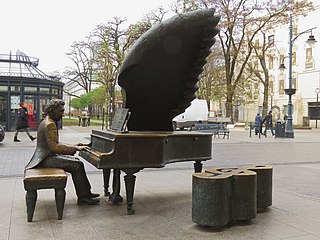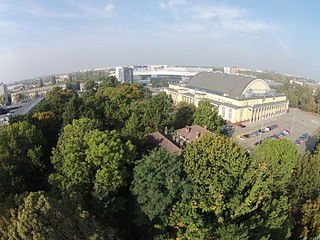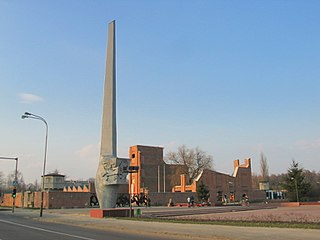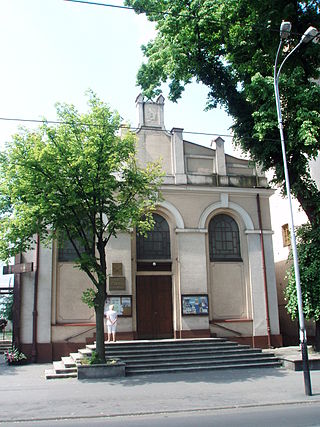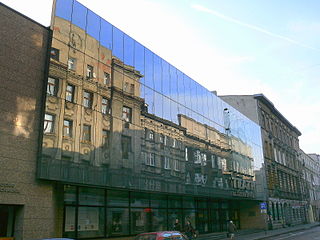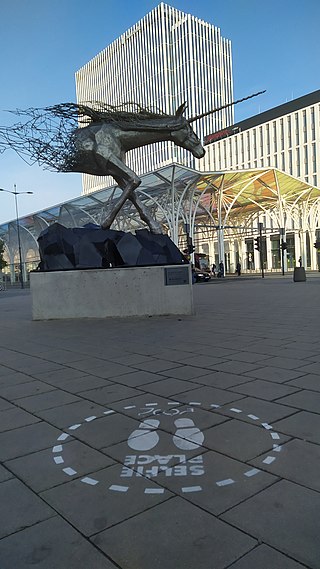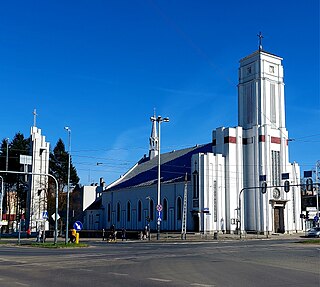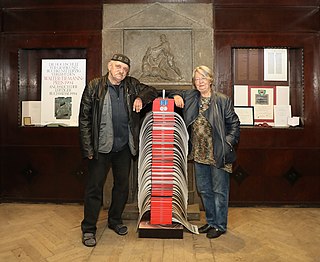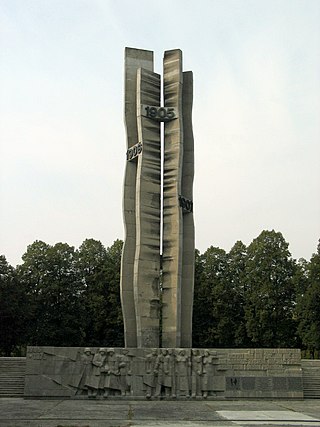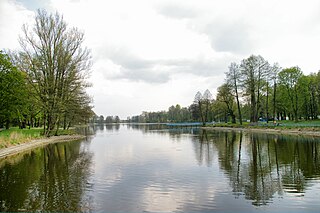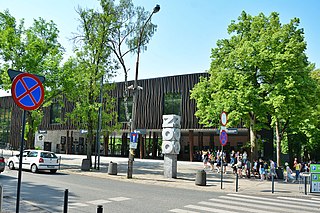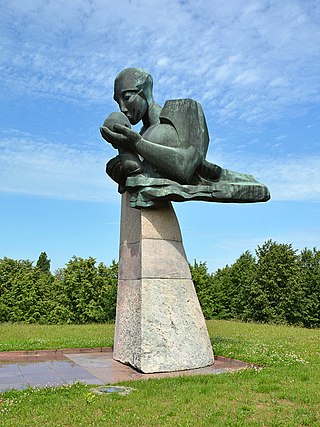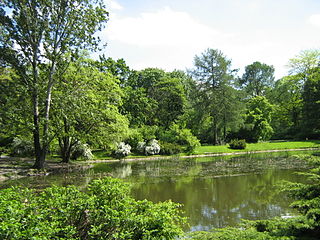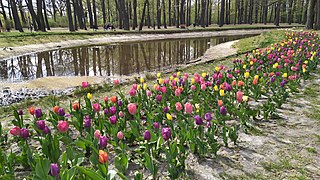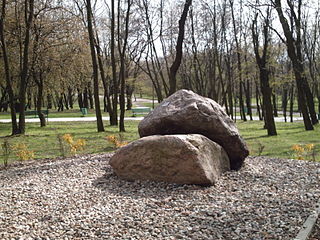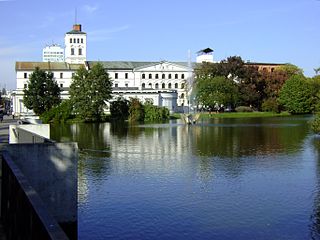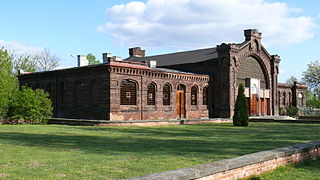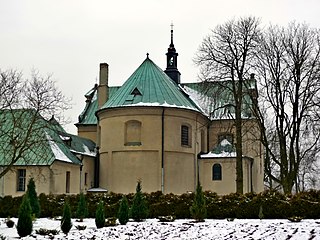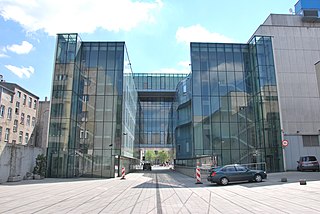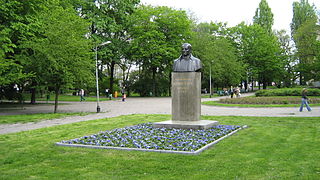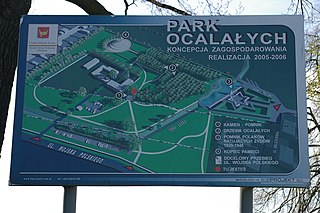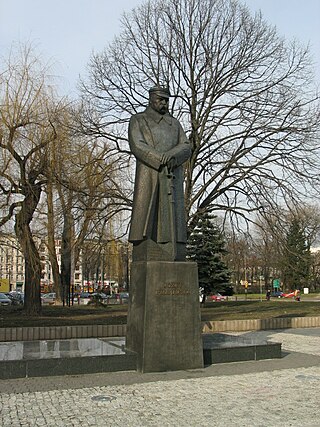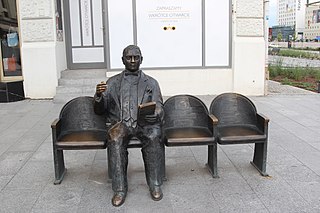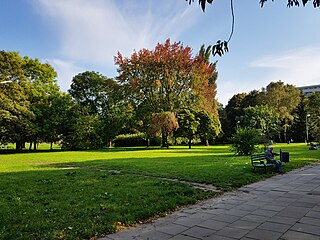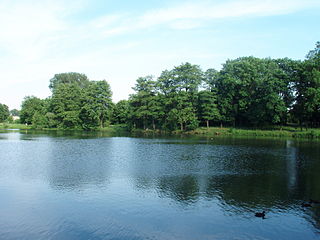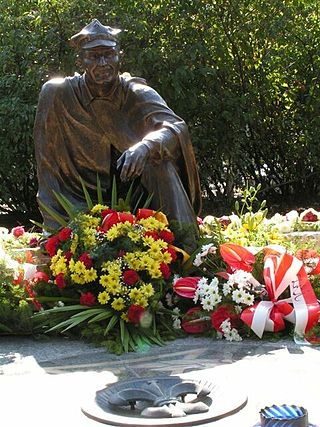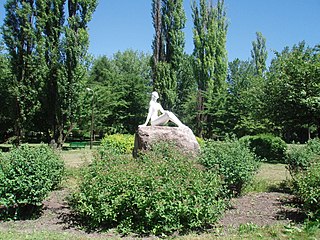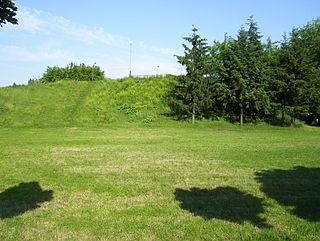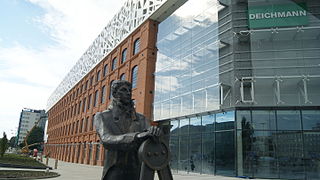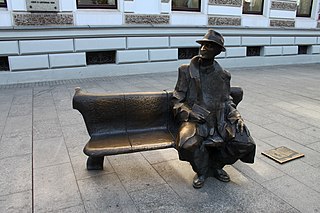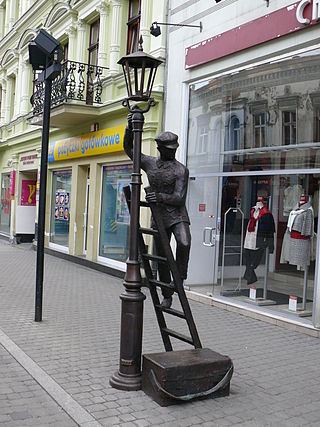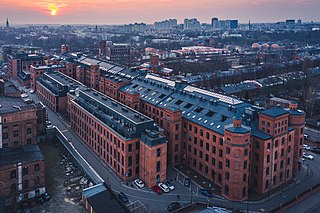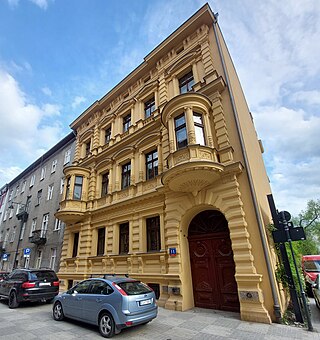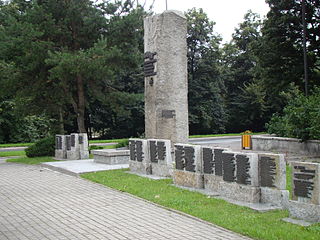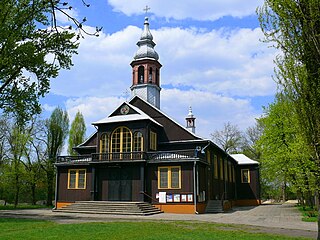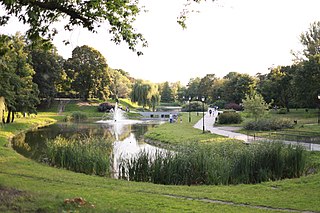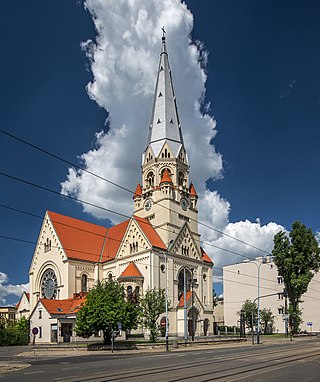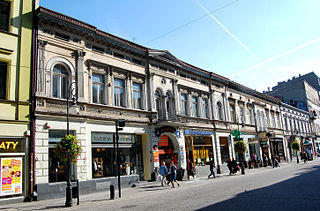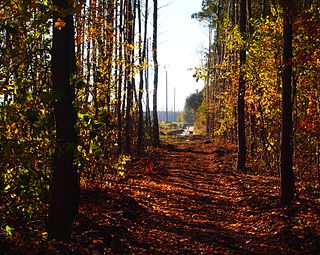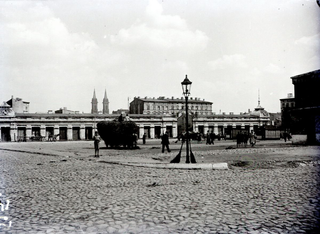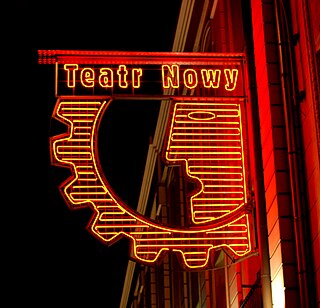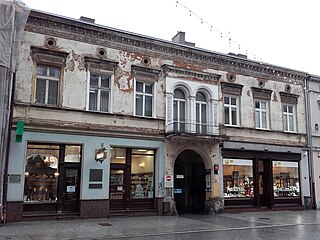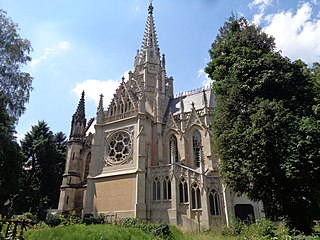70 Sights in Łódź, Poland (with Map and Images)
Legend
Welcome to your journey through the most beautiful sights in Łódź, Poland! Whether you want to discover the city's historical treasures or experience its modern highlights, you'll find everything your heart desires here. Be inspired by our selection and plan your unforgettable adventure in Łódź. Dive into the diversity of this fascinating city and discover everything it has to offer.
Sightseeing Tours in ŁódźActivities in Łódź1. Skwer Gdański
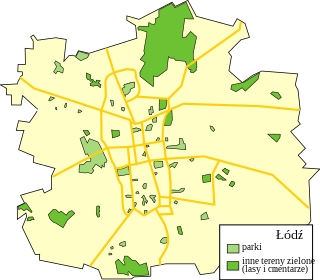
There is a large urban greenery complex in Łódź. In addition to several forests, squares and many allotment gardens, parks are of particular importance to the residents, as they are a place of daily rest and recreation.
2. Muzeum Tradycji Niepodległościowych, oddz. „Stacja Radegast”
Museum of Independence Traditions in Łódź – the longest functioning historical museum in Łódź, established in 1959 under the name "Museum of the History of the Revolutionary Movement"; local governments, gathering all kinds of souvenirs from the field of independence traditions, primarily from Łódź, the Łódź region and selectively Polish. Its Radogoszcz branch specializes in the history of the German occupation of 1939–1945 in Łódź and the Łódź district. As the heir to the Museum of the History of the Revolutionary Movement (1959–1990), it has an important collection of documents, photographs and fine arts from the period of the Polish People's Republic, from Łódź and the region. The collection also contains many unique materials on the history of Łódź and the Łódź region.
3. Kościół św. Doroty (w odbudowie po spaleniu)
St. Dorothy's Church – a church in the Roman Catholic parish in Łódź in the Mileszki housing estate, in the Łódź-Stoki deanery of the Archdiocese of Łódź, located at 445 Pomorska Street, was one of the oldest preserved monuments in Łódź. The church was destroyed and rebuilt many times, renovated at the beginning of the 21st century, and in 2015 it was destroyed as a result of a fire.
4. Kościół Wniebowzięcia Najświętszej Maryi Panny
The Church of the Assumption of the Blessed Virgin Mary is a church located on the Church Square in Łódź. It is the seat of the parish of the Blessed Virgin Mary, the oldest and for almost five hundred years the only Catholic community in Łódź. It belongs to the network of Lenten station churches in Łódź. The church was built in the years 1887–1897 on the site of a wooden church of the same name, which was moved to the cemetery square at 22 Ogrodowa Street.
Wikipedia: Kościół Wniebowzięcia Najświętszej Maryi Panny w Łodzi (PL)
5. Rudzka Góra
Rudzka Góra – a partially artificially built hill in Łódź, located in the Górna district, in the administrative district of Ruda Pabianicka at Starorudzka Street. The natural fragment of Rudzka Góra is a postglacial remain. On the area of the hill with an interesting shape, there is a recreational complex with an area of about 11 ha, where there is a possibility of practicing various types of sports or recreation.
6. Teatr Powszechny
Powszechny Theatre in Łódź – Polish Comedy Centre, a drama scene in Łódź with a distinct artistic comedy logo. Since its establishment in 1945, it has been located in the headquarters at 21 Legionów Street. The theatre has two stages: the Large Stage and the Small Stage, which has been operating since 2012. It presents over 400 performances a year, with an average audience of over 130,000 visitors a year. Its current character, repertoire and the shape of the projects carried out in it are derived from the original programme concept of director Ewa Pilawska, based on the principle of "Theatre Close to People".
7. Synagoga Reicherów
The Reicher Synagogue in Łódź is a synagogue located in Łódź, in the annexe of a tenement house at 28 Rewolucji 1905 roku Street, formerly known as Południowa Street. It is the only preserved pre-war synagogue and one of the two active synagogues in Łódź.
8. Cerkiew św. Olgi
The Orthodox Church of St. Olga is a filial Orthodox church in Łódź. It belongs to the parish of St. Alexander Nevsky in Łódź, in the deanery of Łódź of the diocese of Łódź and Poznań of the Polish Autocephalous Orthodox Church.
9. Museum of the City of Lodz
The Izrael Poznański Palace is a 19th-century palace in Łódź, Poland. Initially the site of a tenement building, the property was transformed into a Neo-Renaissance and Neo-baroque style residence during the years 1888 to 1903. It currently houses the Museum of the City of Łódź.
10. Pomnik Martyrologii Dzieci
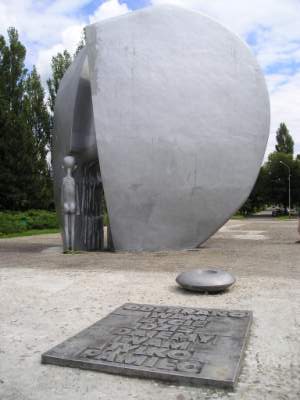
Monument to the Martyrdom of Children, the so-called Broken Heart in Łódź – unveiled on 9 May 1971. It commemorates the tragic fate of Polish children during World War II, especially children-prisoners of the nearby camp for Polish children and youth at Przemysłowa Street in Łódź. The monument is located in the Grey Ranks Park at the intersection of Bracka and Staszica Streets.
11. Kaplica św. Antoniego
The Chapel of St. Anthony – one of the two Baroque wooden chapels located at 75 Wycieczkowa Street in Łódź-Łagiewniki. Together with the chapel of St. Roch and St. Sebastian, it has survived to the present day as the only one of the entire complex of Franciscan chapels in Łagiewniki, consisting of six buildings.
12. Muzeum Sztuki MS1
Muzeum Sztuki, or the Museum of Art in Łódź, is a museum of modern and contemporary art in Łódź, Poland, whose main goal is to research and display the history of avant-garde art, with a focus on Central and Eastern Europe. Founded in 1931, Muzeum Sztuki became the first museum in Europe and the second museum in the world dedicated to collecting and showcasing modern art.
13. Pałac Edwarda Herbsta
The villa of Edward Herbst - a neo -Renaissance villa in Łódź, probably built according to the design of Hilary Majewski in the years 1875–1877, in which the eldest daughter of Karol Scheibler - Matylda Zofia (1856–1939) - with her husband Edward Herbst.
14. Cerkiew Zaśnięcia Najświętszej Maryi Panny
The Orthodox Church of the Dormition of the Most Holy Mother of God is an Orthodox cemetery church in Łódź. It belongs to the parish of St. Alexander Nevsky in Łódź, in the deanery of Łódź of the diocese of Łódź and Poznań of the Polish Autocephalous Orthodox Church.
Wikipedia: Cerkiew Zaśnięcia Najświętszej Maryi Panny w Łodzi (PL)
15. Tablice Radegast
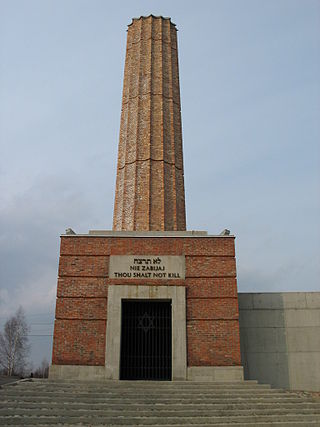
Radogoszcz station is a historic railway station in Łódź, Poland. The station, which was originally built between 1926 and 1937, was used extensively during The Holocaust. It served as the Umschlagplatz for transporting Jews from the Łódź Ghetto to the extermination camps during Operation Reinhard. The "loading platform" is in Marysin, a neighbourhood in the city's Bałuty district.
16. Kościół św. Józefa
St. Joseph's Church – a Roman Catholic parish church from the second half of the eighteenth century at 22 Ogrodowa Street in Łódź. The oldest church in Łódź and the only surviving building from the times of agricultural Łódź.
17. Muzeum Kinematografii
Karol Scheibler's Palace – a neo-Renaissance palace built for Karol Scheibler, located in Łódź at 1 Zwycięstwa Square, next to the huge complex of his factory and the workers' factory housing estate Księży Młyn.
18. Museum of the City of Lodz
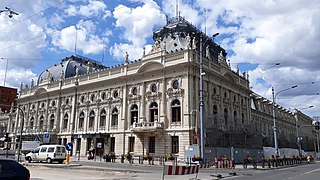
The Museum of the City of Łódź – a local government cultural institution of the city, located in one of the most impressive buildings of the city, in the former palace of the Łódź manufacturer Izrael Poznański at Ogrodowa Street. This residence is a showcase of Łódź and a testimony to its importance in the nineteenth century. The décor of the palace rooms has a neo-style character, characteristic of the art of the turn of the 19th and 20th centuries, with the simultaneous use of elements of Art Nouveau decoration.
19. Grób Nieznanego Żołnierza
The Tomb of the Unknown Soldier in Łódź – a symbolic soldier's monument, designed by Stanisław Kazimierz Ostrowski, unveiled on 22 March 1925 as the first monument of this kind in Poland, dedicated to the nameless fallen on the battlefields.
20. Kościół Najświętszego Imienia Jezus
St. John's Church in Łódź – neo-Romanesque built in the years 1880–1884 as the Lutheran Church of St. John. It was the second church of this denomination in Łódź. Currently, the Roman Catholic Jesuit church at 60 Sienkiewicza Street in Łódź.
21. Sobór św. Aleksandra Newskiego
The Alexander Nevsky Cathedral is a Polish Orthodox church located in the city of Łódź, in central Poland. It was built in the late 19th century as a gift from the local industrialists to the small Orthodox community present in Łódź at the time. The church consists of many ornate elevations and has a richly decorated interior featuring an iconostasis manufactured in St. Petersburg.
22. Kochankowie z ulicy Kamiennej
Lovers from Kamienna Street – a fountain-bas-relief dedicated to Agnieszka Osiecka, located in a niche of one of the tenement houses on Włóknicza Street in Łódź. The unveiling took place on June 25, 2004.
23. Secesyjna willa Leopolda Kindermana
Leopold Kinderman's Villa – a villa located at 31/33 Wólczańska Street in Łódź and originally owned by Leopold Kinderman. One of the best examples of Art Nouveau architecture in Poland and Europe. Uniform in style exterior and interior.
24. Bielnik Kopischa
Kopisch's Bleacher – the oldest preserved factory building in Łódź, located at 5 Ks. bpa Wincenty Tymienieckiego Street; customary, although incorrect, name of an industrial and residential building belonging to Tytus Kopisch.
25. Park Piłsudskiego
Marshal Józef Piłsudski Park, usually Park na Zdrowiu – a historic and largest park in Łódź, stretching over an area of 188.21 ha. It is located in the area of Unii Lubelskiej Avenue and the following streets: Srebrzyńska, Krakowska, Krzemieniecka and Konstantynowska.
26. Archiwum Państwowe (dawny Ratusz Miejski)
The Town Hall in Łódź – one of the first brick buildings in Łódź, erected in 1827 according to the design of Bonifacy Witkowski. It is the most valuable and oldest monument of classicist architecture in Łódź.
27. Fortepian Rubinsteina
The Arthur Rubinstein monument is part of the Gallery of Great Inhabitants of Łódź, which since 1999 has been decorating Piotrkowska Street with bronze outdoor sculptures standing on the pavements, commemorating famous people associated with Łódź.
28. Park im. ks. bp. Michała Klepacza
Bishop Michał Klepacz Park – is located in the south-western part of the city centre of Łódź, between Wólczańska Street, Skorupki Street and Politechniki Avenue, in the Polesie district. The area of the park is 3.3 ha. The park has been owned by the Lodz University of Technology since 2017. In 2019, it was fenced and incorporated into Campus B of the University of Technology.
29. Muzeum Tradycji Niepodległościowych, oddz. Radogoszcz, EKSPOZYCJA MUZEALNA
During World War II, the Radogoszcz prison was a German Order Police and Gestapo prison in Łódź, used by the German authorities during the German occupation of Poland in 1939–1945. Today, it is a site of the museum commemorating its wartime victims.
30. Kościół Matki Bożej Anielskiej
The Church of Our Lady of the Angels – a temple existing in the years 1908–2009 in the Górna district, at the corner of Rzgowska and Ignacego Krasickiego Streets. It was a place of meetings and prayers of the Roman Catholic parish of Our Lady of the Angels.
31. Teatr im. Stefana Jaracza
The Stefan Jaracz Theatre in Łódź, Poland is the oldest theatre in the region. It is a repertory theatre subordinate to the Marshall Office of the Łódź Voivodeship. During the years 1888-1949 it was known as the Polish Theatre and the City Theatre.
32. Unicorn: A place for stars
Unicorn; a Place for Stars – a sculpture depicting a unicorn, located at the intersection of the march avenue. Józefa Piłsudskiego and Piotrkowska Street in Łódź, near the Centrum Tram Station and SDH Central.
33. Kościół pw. Przemienienia Pańskiego
The Church of the Transfiguration in Łódź – a church located in the Górna district at 88 Rzgowska Street – at the intersection with Władysława Broniewskiego Street. It is a place of meetings and prayers of the Roman Catholic parish of the Transfiguration of the Lord.
Wikipedia: Kościół Przemienienia Pańskiego w Łodzi (PL), Website
34. Muzeum Książki Artystycznej
The Book Art Museum is a museum in Łódź established in 1993 by the Correspondance des Arts foundation, founded in 1990 by Janusz Tryzna as an extension of the publishing house of the same name, which had been operating since 1980. The museum is located in Łódź, in Henryk Grohman's villa at 24 Tymienieckiego Street. From 1 January 2023, the Book Art Museum in Łódź is a cultural institution established by the Minister of Culture and National Heritage and the Correspondance des Arts Foundation.
35. Pomnik Czynu Rewolucyjnego w Łodzi
The Monument to the Revolutionary Act – a monument in the park in Zdrowiu in Łódź, by the sculptor Kazimierz Karpiński from Łódź, on the northern side of Konstantynowska Street, unveiled on 22 June 1975.
36. Park 1 Maja
1 Maja Park, Stefański Ponds – a recreational facility, located in Łódź in the district of Łódź Górna, in the area of Ruda Pabianicka, between Rudzka, Farna, Patriotyczna and Głębowa streets.
37. Orientarium ZOO Łódź
The Łódź Zoo is a zoological garden in the city of Łódź, Łódź Voivodeship in Poland. Established in 1938, it covers the area of 16,64 hectares in the district of Polesie and is home to 3,350 animals representing 554 species, including endangered Asiatic lions. The zoo is the only zoological garden in Poland to feature such animals as giant otters, Sumatran orangutans, false gharials, and bush dogs.
38. Pomnik Matki Polki
Motherhood – a monument standing in front of the Polish Mother's Memorial Hospital Institute in Łódź. It is also often called the monument of the Polish Mother. It depicts a mother kissing a child held in her arms.
39. Park Poniatowskiego
The Prince Józef Poniatowski Park in Łódź is a park in Łódź, Poland located between Żeromskiego, Mickiewicza, Jana Pawła II and Parkowa Streets. The area of the park is 41.6 ha. It was named in honour of Polish general and statesman Prince Józef Poniatowski (1763–1813).
40. Park 3 Maja
3 Maja Park – a historic park in Łódź located in the area of Kopcińskiego and Małachowskiego Streets, from the south bounded by the railway tracks belonging to the Łódź Ring Railway and from the east by the Baden-Powell Park.
41. Park im. gen. Mariusza Zaruskiego
General Mariusz Zaruski Park in Łódź – a park in Łódź located in the area of Giewont, Potokowa, Skalna and Szczytowa streets, in the Stoki housing estate, on the highest level of the edge zone of the Łódź Hills, in the area of the so-called Stokowska Hill.
42. Kaplica Heinzlów
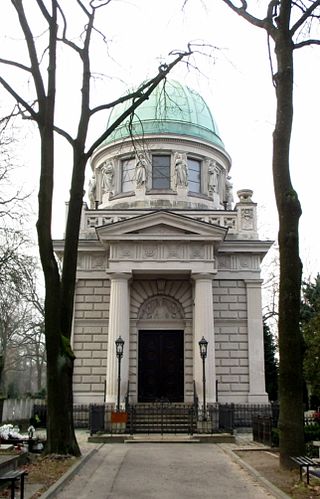
The Heinzl Family Chapel – a tombstone chapel-mausoleum located in the Old Cemetery at Ogrodowa Street in Łódź. It was built in the years 1899–1903 in the Neo-Renaissance style, according to the design of the Berlin architect Franz Schwechten. It was erected to commemorate one of the greatest manufacturers in Łódź, commissioned by the widow Paulina née Volkman and their descendants.
43. Biała Fabryka Geyera
The White Factory is the classicist building in Łódź, Poland, constructed in 1835–1839 to host a textile factory which belonged to Ludwik Geyer. It currently hosts the Central Museum of Textiles and Folk Dance Ensemble "HARNAM". It is considered a fine example of early industrial architecture in Łódź. The building is located at the southern end of Piotrkowska Street, south of the city center.
44. Dom przedpogrzebowy w Łodzi
Funeral home in Łódź – a building of a funeral home, which is located in the eastern part of the new Jewish cemetery in Łódź. Currently, it is the largest building of this type in Poland and one of the largest in the world. The building is entered into the provincial register of monuments under the number A/276.
45. Kościół pw. Świętego Antoniego Padewskiego i Świętego Jana Chrzciciela
St. Anthony of Padua Church in Łódź-Łagiewniki - Baroque Franciscan parish church, built in the first half of the 18th century, located in Łódź-Łagiewniki. Since 1946 it belongs - along with the monastery - to the historic buildings of Łódź.
46. Filharmonia Łódzka
The Arthur Rubinstein Łódź Philharmonic is a professional symphony orchestra based in Łódź, Poland. It was founded in 1915 by composer and conductor Tadeusz Mazurkiewicz and Gotliba Teschnera, a cello instructor and bookstore owner. The men organized the orchestra initially as a temporary ensemble to play for a benefit for impoverished musicians. The orchestra was made up of approximately 60 musicians, both professional and amateur. The enthusiastic reception of this benefit concert drew the patronage of industrialist Karol Wilhelm Scheilbler, who provided the finances necessary to make the orchestra a permanent ensemble. Mazurkiewicz was appointed the orchestra's first director.
47. Park Moniuszki
Stanisław Moniuszko Park in Łódź – a park located within the following streets: Składowa, Kilińskiego, Narutowicza, Polskiej Organizacja Wojskowa. It was established in 1875, with a total area of 2.3 ha.
48. Park Ocalałych
Survivors' Park is a park in Łódź commemorating people who survived the Łódź Ghetto, which was created and operated by Nazi Germany during the Holocaust. The park was officially opened on 30 August 2004, the 60th anniversary of the liquidation of the ghetto. The park is located in the former territory of Łódź Ghetto, between Wojska Polskiego Street and allotment gardens at Sporna Street in the valley of the Lodz River, in the area adjacent to the borders of the Litzmannstadt Ghetto during the war in Smugowa Street. The park was designed by Grażyna Ojrzyńska.
49. Marszałek Józef Piłsudski
The Monument of Marshal Józef Piłsudski – unveiled in 1997 the monument of Józef Piłsudski in Łódź, located at the intersection of Kilińskiego and Traugutta Streets. The monument is set on the paved square of the Riflemen's Association "Strzelec", near the Łódź Cultural Centre.
Wikipedia: Pomnik Marszałka Józefa Piłsudskiego w Łodzi (PL)
50. Fotel Jaracza
Stefan Jaracz Monument – a monument located in Łódź and depicting Stefan Jaracz, sitting in the audience in a theatre, holding a director's copy in his hand. Passers-by can sit in the free seats next to the bronze statue of the founder of the Ateneum Theatre in Warsaw.
51. Park im. gen. Jarosława Dąbrowskiego
General Jarosław Dąbrowski Park – an area of urban greenery located in the southern part of Łódź between Rzgowska, Jarosława Dąbrowskiego, Podmiejska and Stanisława Jachowicza streets in the Górna district.
Wikipedia: Park im. gen. Jarosława Dąbrowskiego w Łodzi (PL)
52. Park na Młynku
Park na Młynku – an area of urban greenery and a water reservoir in the valley of the Olechówka River, located in Łódź in the south-eastern part of the Górna district between Młynek and Bławatna Streets, at the end of Śląska Street.
53. Pomnik Aleksandra Kamińskiego
The Aleksander Kamiński Monument is an outdoor sculpture in the Old Town Park in Łódź. The monument depicts Aleksander Kamiński, dressed in a scout cape and a horned cap, sitting by the fire. Its author is Kazimierz Karpiński. The monument was unveiled on 24 September 2005 as part of the celebrations of the 50th anniversary of the Łódź-Polesie Scout Troop.
54. Skwer im. Henryka Dubaniewicza
Henryk Dubaniewicz Square – an area of urban greenery located in Łódź in the Górna district between Paderewskiego, Strycharska, Ciołkowskiego and Zakopiańska streets. The area of the square is about 5 hectares.
55. Park Baden-Powella
Robert Baden-Powell Park – Chief Scout of the World – a park in Łódź, with an area of 15.8 ha, located in the area of Małachowskiego and Niciarniana streets, from the west it borders with the 3 Maja Park, from the south with the railway tracks of the Łódź Fabryczna – Koluszki line. The park was named after the British general Robert Baden-Powell, the founder of scouting. The name was given to celebrate the centenary of the scout movement in the world.
56. Pomnik Początków Miasta Łodzi
The Monument to the Beginnings of the City of Łódź – a monument to Rajmund Rembieliński in Łódź at the intersection of Politechniki Avenue and Rembielińskiego Street, in front of the entrance to the Sukcesja Shopping and Entertainment Centre.
57. Ławeczka Tuwima
Julian Tuwim Monument or the Tuwim's Bench is a monument dedicated to Julian Tuwim at the Piotrkowska Street district of Łódź, Poland. The monument was constructed in 1998-1999 by sculptor Wojciech Gryniewicz.
58. Pomnik Lampiarza
The Lampiarza Monument - a monument to the nameless electrician was unveiled on September 21, 2007 next to the tenement house of Dawid Szmulewicz at ul. Piotrkowska 37. The opportunity was the hundredth anniversary of the creation of the first power plant in Łódź. The founders of the monument are Dalkia Łódź SA and the Łódź Energy Plant. The monument presents a natural sized stylish lantern and a leopard with a bulb in the right hand, standing on a ladder supported by a pole. Next to it is a bag that is also a monument bench on which you can sit down.
59. Famuły Księży Młyn
Księży Młyn is an area in the southern central part of the city of Łódź located in central Poland which consists of a group of textile factories and associated facilities, built in Łódź since 1824. Since the first decade of the 21st century the area undergoes major renovation and contains mixed-use development of offices and housing.
60. Dom Hilarego Majewskiego
Hilary Majewski's House – a neo-Renaissance tenement house of the city architect, Hilary Majewski, located at 11 Włóknicza Street in Łódź, built in the years 1883–1886. Originally, it was the owner's villa, but over time it was transformed into a multi-family building.
61. Pomnik Katyński
The Katyn Monument in Łódź – the first monument in Poland commemorating the victims of the Katyn massacre standing in the open urban space, located on the Square of the Victims of the Katyn Massacre at Łąkowa Street near the Church of Our Lady of Victory in Łódź, unveiled on 16 September 1990.
62. Kościół pw. Najświętszego Zbawiciela
Church of the Holy Saviour – a Roman Catholic parish church belonging to the deanery of Łódź-Teofilów-Żubardź of the Archdiocese of Łódź. It is located in the Koziny housing estate. It is currently one of three wooden churches in Łódź.
63. Park Helenów
Helenów Park in Łódź, Poland is a park located between Północna, Źródłowa and Smugowa streets and covers an area of 12 hectare. Of all park trees, five are natural monuments: two pedunculate oaks with a circumference of 320 and 340 cm, common beech with a circumference of 245 cm, red oak with a circumference of 350 cm and ash tree with a circumference of 385 cm. The park is entered in the Registry of Objects of Cultural Heritage.
64. Kościół św. Mateusza
St. Matthew's Church in Łódź is a Lutheran church and historic landmark located in Piotrkowska Street, at a short distance from the city's Catholic cathedral. The third Lutheran church in Łódź at the time of its construction, it is now the only church in the city that serves the Evangelical Church of the Augsburg Confession in Poland, the country's largest Protestant denomination.
65. kamienica R. Sachsa
Rafał Sachs' tenement house is a tenement house located in Łódź at 44 Piotrkowska Street. It was entered into the register of immovable monuments of the Łódź Voivodeship on 20 January 1971 with the number A/43 and into the Municipal Register of Monuments of the City of Łódź with the number 962.
66. Park Źródła Olechówki
Olechówka Springs Park – a city park in Łódź located between the Victims of Terrorism 11 Września Avenue and Kazimierza Odnawiaciela and Bolka Świdnickiego Streets, in the Olechów housing estate. It was established in 2010. It covers an area of over 15 ha. The Olechówka River originates here. The area of the park is very wet, so its drainage is expected in the future. The park's vegetation consists of well-preserved natural riverside meadows with a rich tree stand. The park serves recreational functions mainly for the residents of Olechów. There is also a barbecue area, and in 2018 a brine graduation tower was built in the park.
67. Plac Piastowski
Piastowski Square – a square in Łódź located in the Bałuty district between the streets: Lutomierska, Bazarowa and Rybna. Currently, it serves as a leisure square, it is also a green area. It has the characteristics of a park: there are many trees and alleys.
68. Teatr Nowy im. Kazimierza Dejmka
The New Theatre in Łódź also known as the Kazimierz Dejmek New Theatre is one of the repertory theatres in Łódź (Poland), established in 1949. The theatre presents a varied programme, including international classic drama, and new plays by contemporary playwrights. In addition to performances at the Nowy Theatre building, the Nowy Theatre tours productions at theatres across the Łódź region, Poland and abroad.
69. Kamienica R. Rozenthala
Józef Rosenthal's tenement house – a tenement house located in Łódź at 46 Piotrkowska Street. It was entered into the register of immovable monuments of the Łódź Voivodeship on 20 January 1971 with the number A/69 and into the Municipal Register of Monuments of the City of Łódź with the number 964.
70. Kaplica Rodziny Scheibler
The Scheibler Family Chapel in Łódź – a tombstone chapel-mausoleum located in the Old Cemetery at Ogrodowa Street in Łódź, in its Evangelical-Augsburg part. Completed in 1888 according to the design of Edward Lilpop and Józef Dziekoński, it is one of the largest works of cemetery architecture in the world and a testimony to the unprecedented development of Łódź in the 19th century.
Share
How likely are you to recommend us?
Disclaimer Please be aware of your surroundings and do not enter private property. We are not liable for any damages that occur during the tours.
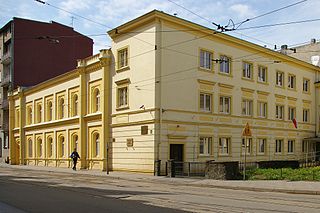
.jpg)
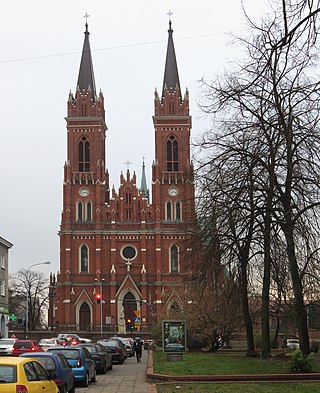
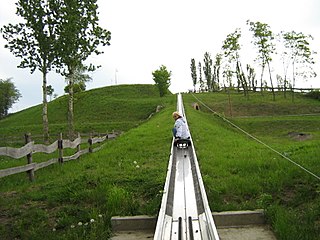
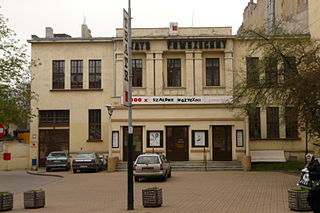
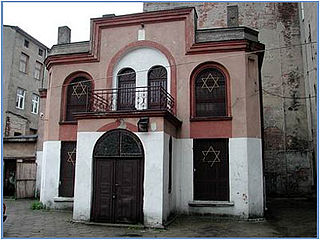
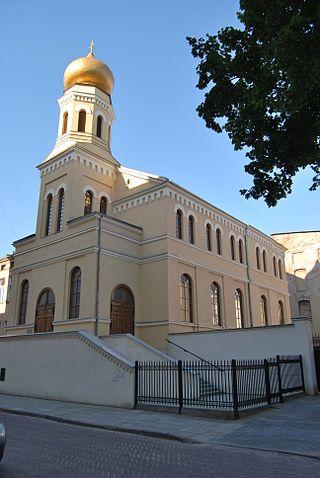
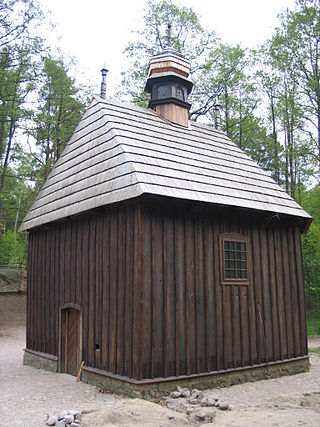

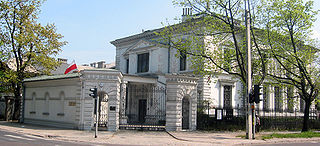
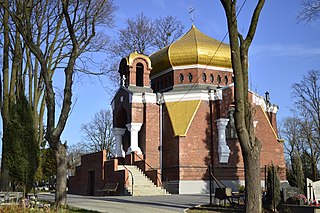
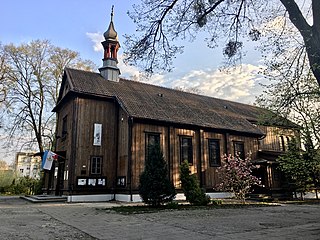
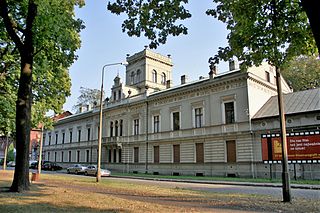
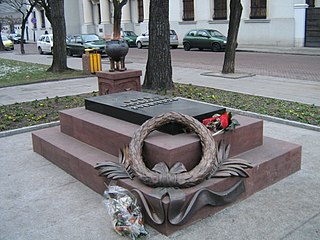
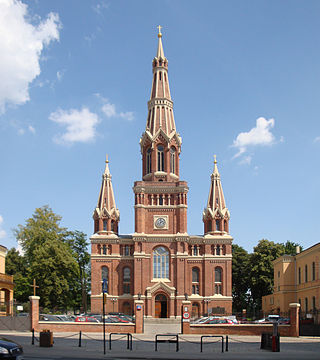
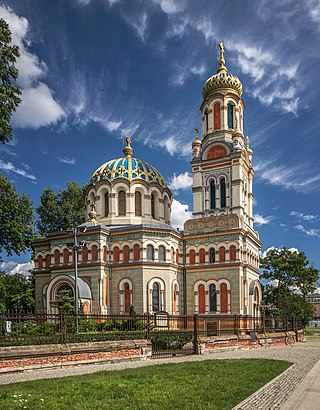
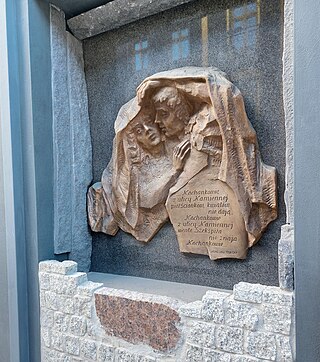
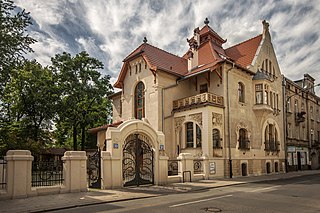
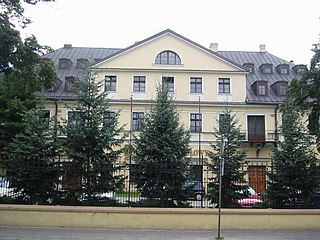
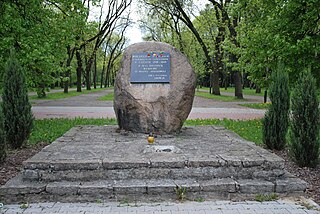
.jpg)
